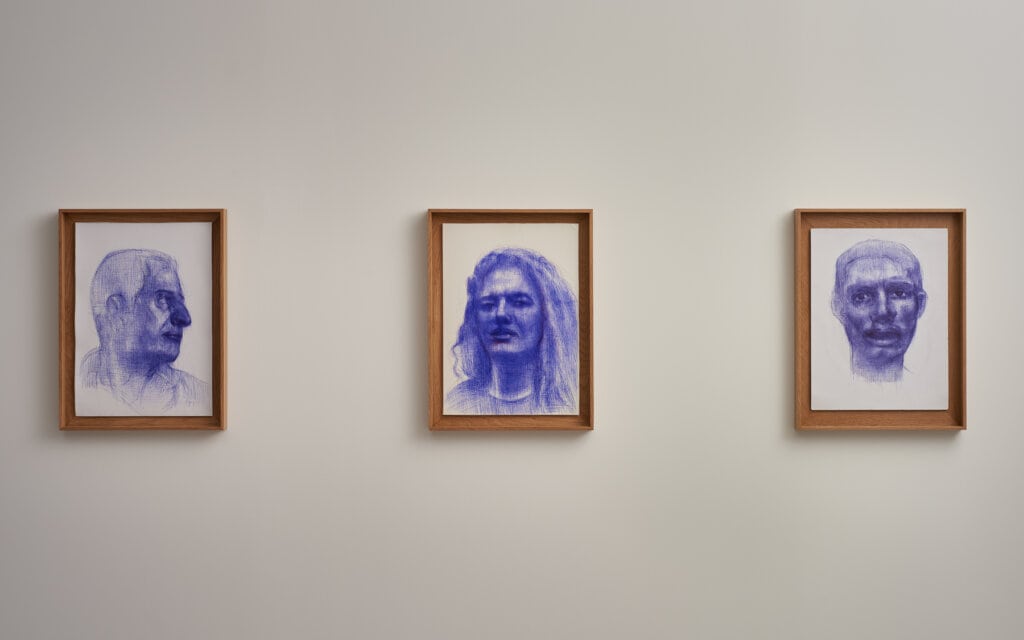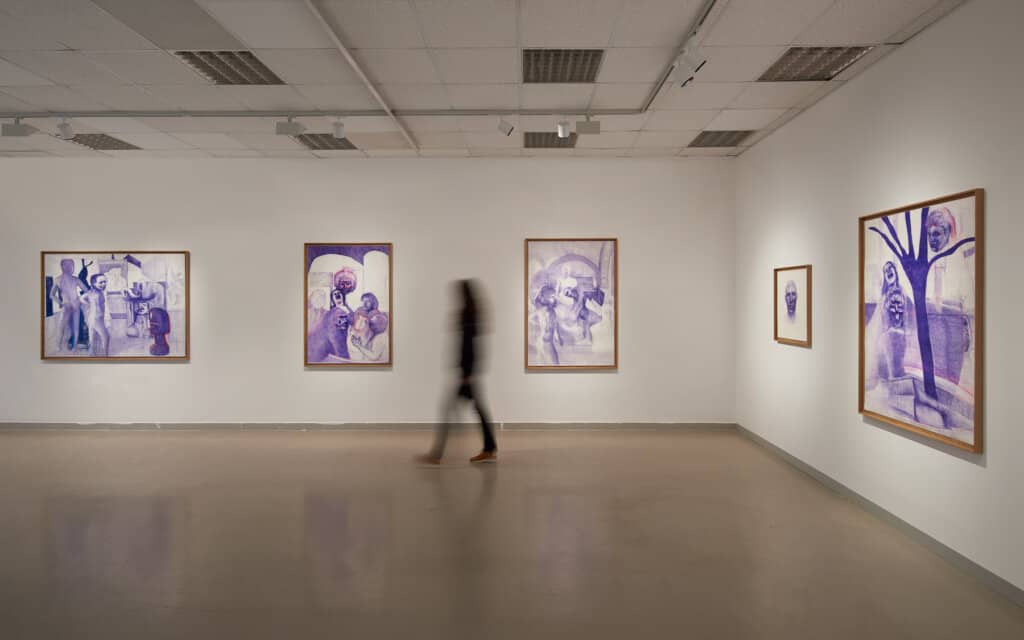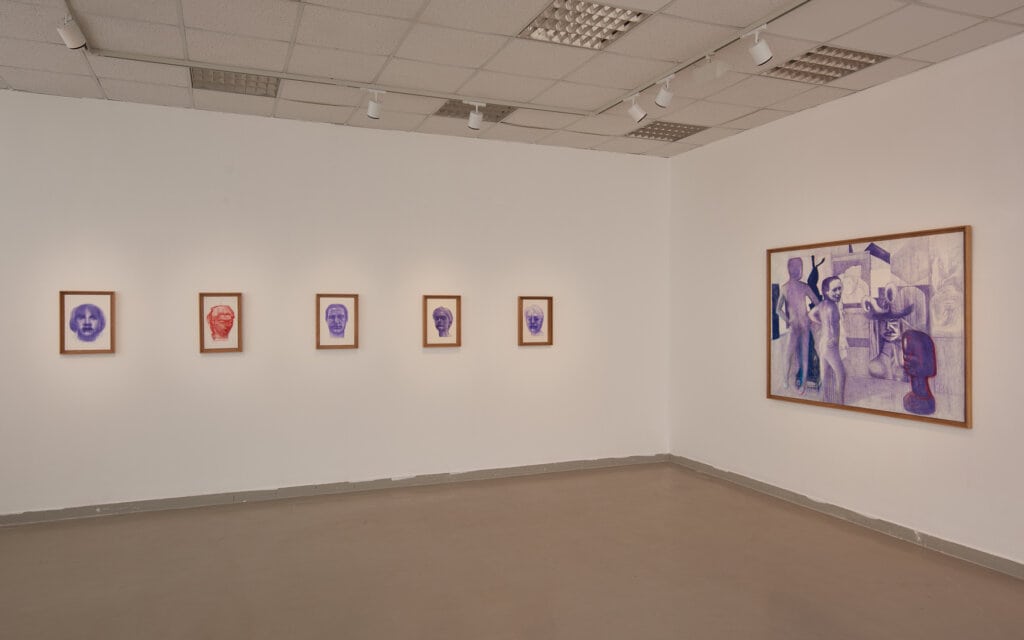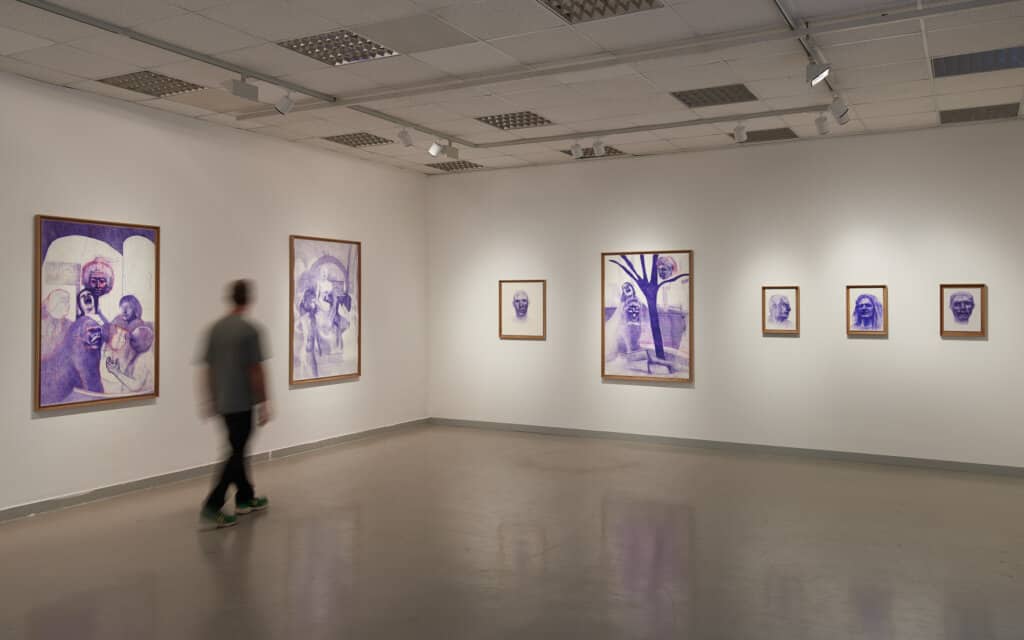Tamar Simon: No Ground
Curator: Danielle Tzadka-Cohen
11/01/2024 -
18/05/2024

In her exhibition No Ground, Tamar Simon presents portrait drawings
and three theatrical scenes rendered in ballpoint pen, and oil pastels.
The “portrait” drawings call to mind “identikit” pictures or facial
composites; crosses of different figures produced with techniques
used in forensic labs or to identify missing persons. Simon’s hybrids
consist of AI-generated busts (upper bodies) and facial reconstructions,
alongside images from art history and parts of the artist’s own face.
The drawings of the theatrical scenes fuse absurd occurrences
comprising images cut from books, newspapers, and the Internet,
alongside drawings of small-scale sculptural objects installed in
dramatic arrays. Simon draws in the dark, with the curtains drawn.
“Darkness,” she says, “brings things out”; it inspires intimacy and
security, allowing the raw drawing to gradually reveal itself.
Simon’s figure gathering process imitates virtual search engines,
whose infinite nature challenges the truth. Rather than providing
answers, they only lead to more and more websites, introducing a role
reversal: instead of simply tracking down an answer to a question, the
virtual search traces the user’s intent, leads to countless new sites,
and in the process changes the initial course of affairs. The algorithm
guiding it subjugates one to aimless movement. Simon’s meticulous
drawing is combined with contemporary technologies, ranging from
the human to the pliable, from the real to the imaginary, and from
empirical mapping to fake news.
Originating in Greek, the word klasteron (face) is linked in modern
Hebrew to the field of forensics, denoting a facial composite, whose
creation is based on eyewitness testimony and forensic findings.
Simon’s facial composites present distorted, expressionless, terrified looking
hybrid figures. In some instances they appear to be finished
drawings, in others—quick studies. Oscillating between the human
and the artificial, they resemble alienated ghosts or tortured martyrs.
The overflowing pain verges on beauty and the fear of the sublime.
The drawing grids are spread out like disintegrated layers, to create a
human figure that is emptied of its humanity, echoing the indifference
of the environment and God’s absence.
Populated by angels from classical paintings, archaic ritual images,
and Shakespearean characters in a contemporary adaptation, the
theatrical scenes present impossible relationships that transcend
temporal limitations. Impurity and holiness, passion and tragedy are
woven together in this arena which extends between pleasure and
torture. A powerful, loose harmony is created in the encounter between
Simon’s drawing hand and the weakness represented in the works.
In Simon’s drawings, the head seems to be cut off from the body,
the organs are independent, and the systems are detached from the
boundaries of the body as a containing shell. The face loses its human
image, leaving behind a violated identity, thus raising the question of
humanity—as an image and as a reality—which is at the core of these
drawings by Simon, who in recent years has focused on portraits of
immigrants and refugees. Does humanity stem from the mere fact of
being human or rather from one’s moral degree?



Installation photographs: Youval Hai

